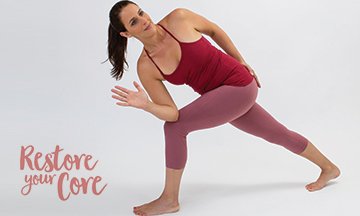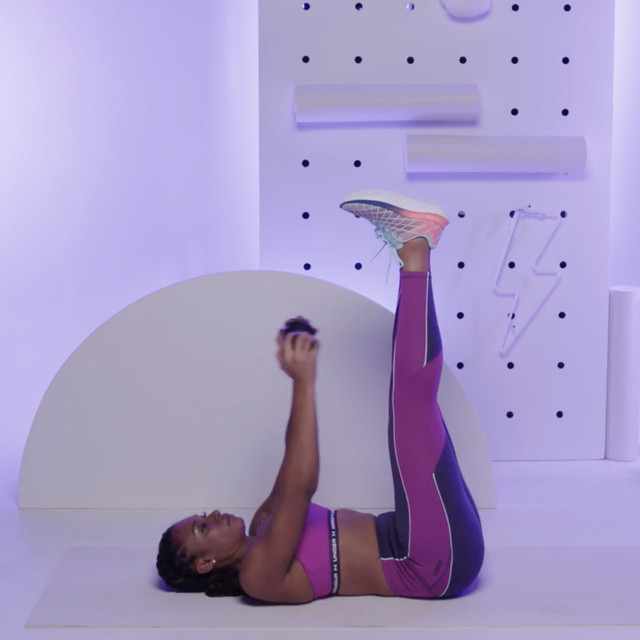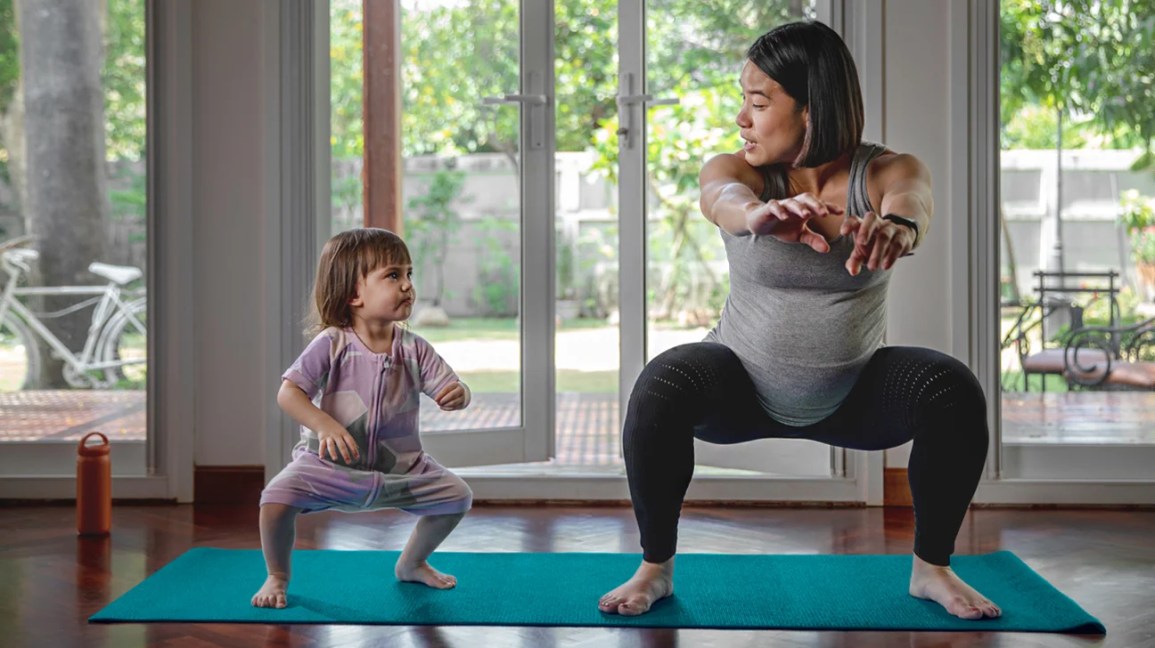The best exercises for diastasis recti include pelvic tilts, heel slides, and deep belly breathing. These targeted moves help strengthen the core without straining the midline.
Dealing with the gap that sometimes develops between abdominal muscles during pregnancy, known as diastasis recti, can be challenging. Effective exercise selection is crucial for safe recovery and strengthening of the abdominal wall. Core rehabilitation often starts with gentle exercises that focus on engaging and fortifying the transverse abdominis, the deep core muscle that supports your spine and organs.
A well-structured exercise routine for diastasis recti should aim to enhance core stability and function while minimizing the risk of increasing the separation. Consulting a physical therapist or a fitness professional specialized in postpartum recovery can ensure that the exercises are performed correctly and safely.

Credit: laurenohayon.com
Identifying Diastasis Recti
Diastasis Recti can be subtle. Many don’t know they have it. A gap in the abdominal muscles is the tell-tale sign.
Symptoms To Watch For
Common symptoms include:
- A noticeable bulge in your stomach, especially when straining or contracting abdominal muscles
- Lower back pain
- A feeling of weakness in the core area
- Bowel movement problems
- A belly button that is no longer an “innie” or has changed shape
Witnessing a “doming” or “coning” shape while doing sit-ups is a red flag.
Post-pregnancy women should stay alert for these signs.
Seeking A Professional Diagnosis
Consult a health expert if you spot symptoms. They can assess and provide a plan.
- An ultrasound or physical exam can confirm it.
- A doctor or physical therapist evaluates the gap width.
- Diagnostic tests determine recovery methods.
Early detection leads to better recovery. Don’t hesitate to seek help.
Basics Of Core Restoration
Diastasis recti is a condition impacting the abdominal muscles, commonly seen after childbirth. A key focus for recovery is core restoration. Establishing a strong, functional core is essential. It is not just about appearance. It aids in overall health and well-being.
Importance Of A Strong Core
The core is the body’s central foundation. It supports posture, stability, and everyday movements. A strong core helps prevent injuries. It is crucial for tasks like lifting and bending. It also supports the back and allows for better balance.
- Enhances posture
- Improves stability
- Supports other muscles
Role Of Exercise In Healing Diastasis Recti
Exercise is key to healing diastasis recti. It should focus on gently engaging and restoring the core muscles. Start with simple exercises. Avoid movements that can strain the midline. Suitable exercises include:
| Exercise | Description |
|---|---|
| Pelvic Tilts | Engage the core by tilting the pelvis upward |
| Deep Belly Breathing | Breathe deeply to work the inner core muscles |
| Heel Slides | Slide the heel while keeping the core stable |
As strength builds, include more challenging exercises. Always consult a healthcare provider before starting any new exercise routine. Work with a physical therapist trained in diastasis recti rehab for best results.
Safe Exercises For Diastasis Recti
Healing from diastasis recti involves gentle and effective core strengthening. Safe exercises can help bridge the gap and promote recovery. Say goodbye to the fear of making things worse and hello to a more toned, stable midsection with these carefully selected workouts. Here are some exercises to help you start the journey to recovery.
Deep Stomach Breathing
Deep breathing is the cornerstone of diastasis recti recovery. It activates and strengthens the deep core muscles. Start by lying on your back with knees bent. Place one hand on your chest, and the other on your belly. Breathe in deeply through your nose, letting your belly rise more than your chest. Exhale slowly through the mouth and gently pull your belly button towards your spine. Repeat this daily.
Pelvic Tilts For Core Engagement
Pelvic tilts work wonders by activating key core muscles without straining the abdomen. Lie on your back with knees bent. Flatten your back against the floor by tightening your abdominal muscles and tilting your pelvis up. Hold for a few seconds and then relax. Gradually increase the duration as your strength improves. Pelvic tilts are safe, effective, and easy to incorporate into your routine.

Credit: www.youtube.com
Advanced Movements For Core Strengthening
Advanced Movements for Core Strengthening play a crucial role in overcoming diastasis recti. After mastering the basics, these exercises can help further. They challenge the core without straining the abdominal separation. Delve into these higher-level workouts for enhanced core strength and recovery success.
Progressing To Leg Slides
Leg Slides pave the way for a challenging yet safe strengthening journey. Engage your core to protect your progress.
- Lie on your back with knees bent.
- Keep your spine neutral, in contact with the floor.
- Slowly slide one leg out until it is straight, keeping the other bent.
- Drag your heel back to the start position.
- Switch legs and repeat.
- Maintain a gentle core contraction throughout.
Tip: Breathe out as you slide, and perform 5 to 10 slides per leg.
Incorporating Side Planks
Side Planks target oblique muscles for a complete core challenge. They offer an excellent progression for those ready to take the next step.
- Start in a side-lying position, propped on your elbow.
- Feet should be stacked or staggered for stability.
- Lift your hips to create a straight line from shoulders to feet.
- Hold for up to 30 seconds, then gently lower down.
- Repeat on the opposite side.
| Duration | Repetitions | Precision Tips |
|---|---|---|
| 15-30 seconds | 2-3 per side | Engage the core, breathe steadily |
Remember: Keep your body in one straight line and avoid dropping your hips.
Avoiding Common Mistakes
Diastasis Recti, a common concern among postpartum women, describes the separation of the abdominal muscles. While certain exercises can promote healing, others might exacerbate the condition. Recognizing and avoiding common mistakes is crucial in the journey to recovery. Let’s ensure your workout supports your healing process, not hinders it.
Exercises To Steer Clear Of
Exercises that create pressure on the midline of your abs should be avoided. These activities might worsen the separation. Focus on maintaining the integrity of the abdominal wall during recovery.
- Crunches and sit-ups: These put too much strain on the midline.
- Planks: They can force your abs apart further.
- Twisting motions: These can stress the weakened midsection.
- Heavy lifting: It increases abdominal pressure.
- Certain Yoga poses: Avoid poses that stretch your abs, like the cow pose.
Listening To Your Body’s Limits
Your body holds the answers. Pay attention to how it feels as you exercise. Subtle discomfort may signal to stop or modify the activity. Ensure your body aligns correctly and responds positively to the workouts you choose. Back off from any movement that causes pain, and focus on gradual progress.
| Activity | What To Watch For |
|---|---|
| Walking | Should feel comfortable, no pelvic pain. |
| Posture exercises | Maintain alignment, no back strain. |
| Deep breathing | No discomfort in the abdominal area. |

Credit: laurenohayon.com
Incorporating Exercise Into Your Routine
Mending diastasis recti calls for commitment to a tailored exercise regimen. Having a routine lays the groundwork for healing. Start slow, stay consistent, and watch your core grow stronger. Let’s dive in and build that foundation with focused, effective workouts.
Creating A Sustainable Workout Plan
A well-thought-out plan is key to lasting success. Begin with simple, gentle exercises. Then, gradually increase intensity. Don’t push too hard and risk setbacks. Consistency overrides speed in healing. A weekly planner helps track progress. Aim for three to five exercise days per week. Always listen to your body’s signals and rest when needed. Stick to the plan and progress naturally.
Balancing Core Work With Overall Fitness
The core is central but don’t neglect the rest of the body. Find harmony between strengthening your core and overall conditioning. Alternate core-specific workouts with full-body exercises. Non-impact activities like walking or swimming complement core work well. They support cardiovascular health without straining the midsection. Balance leads to a stronger, more resilient body.
Supplementing Exercise With Lifestyle Changes
Embarking on an exercise regimen for diastasis recti is crucial. Yet, physical effort alone may not weave the full tapestry of recovery. Lifestyle changes hold a significant thread in the fabric of healing diastasis recti. An approach that marries effective exercises with mindful lifestyle modifications elevates success rates. Let’s delve into how nutrition and posture can play pivotal roles in this journey.
Nutrition For Recovery
Appropriate nutrition lays the foundations for healing. Prioritize foods that foster skin elasticity and promote muscle repair. Vital nutrients include:
- Vitamin C: Aids in collagen formation. Think oranges, strawberries, and bell peppers.
- Protein: Builds muscle tissue. Include lean meats, beans, and tofu.
- Omega-3 Fats: Reduces inflammation. Find these in fish, flaxseeds, and walnuts.
- Zinc: Supports healing. Try pumpkin seeds and chickpeas.
Stay hydrated. Water plays a key part in recovery. Avoid processed foods. They can hinder progress.
The Impact Of Posture On Recovery
Standing tall is not just a metaphor for resilience. Correct posture aligns muscles and supports healing. Tips to improve posture:
- Keep your shoulders relaxed and back.
- Align ears with shoulders when seated or standing.
- Engage your core muscles; imagine bringing your belly button towards your spine.
Be mindful of slouching. This can worsen diastasis recti. Opt for a supportive chair when sitting. Avoid lifting heavy objects incorrectly. Always bend from the knees, not the waist.
Frequently Asked Questions On The Best Exercises For Diastasis Recti
Can Diastasis Recti Be Corrected With Exercise?
Yes, specific exercises can help improve diastasis recti by strengthening the abdominal muscles. Consulting a healthcare professional for a personalized exercise plan is advisable.
What Is The Fastest Way To Fix Diastasis Recti?
The fastest way to repair diastasis recti is through targeted exercises, often guided by a physical therapist. Consistency with core-strengthening workouts, proper technique, and avoiding activities that strain the midline can expedite recovery. Consult a healthcare professional for personalized advice.
What Exercises Are Best For Diastasis Recti?
Some effective exercises for diastasis recti include pelvic tilts, toe taps, and heel slides. Deep stomach muscle contractions, bridge poses, and single leg stretches also aid healing. Always consult a healthcare professional before beginning an exercise routine.
How Long Does It Take To Heal Diastasis Recti With Exercise?
Healing diastasis recti with exercise typically takes 12 weeks to a year, depending on individual commitment and the severity of the condition. Consistent, targeted workouts are crucial for effective recovery.
Conclusion
Embracing the right exercises can significantly improve diastasis recti. Consistency and technique are key. Seek professional advice for optimal results. Remember, your journey to recovery is unique. Start with gentle movements and progressively challenge your core. Here’s to a stronger, healthier you!


